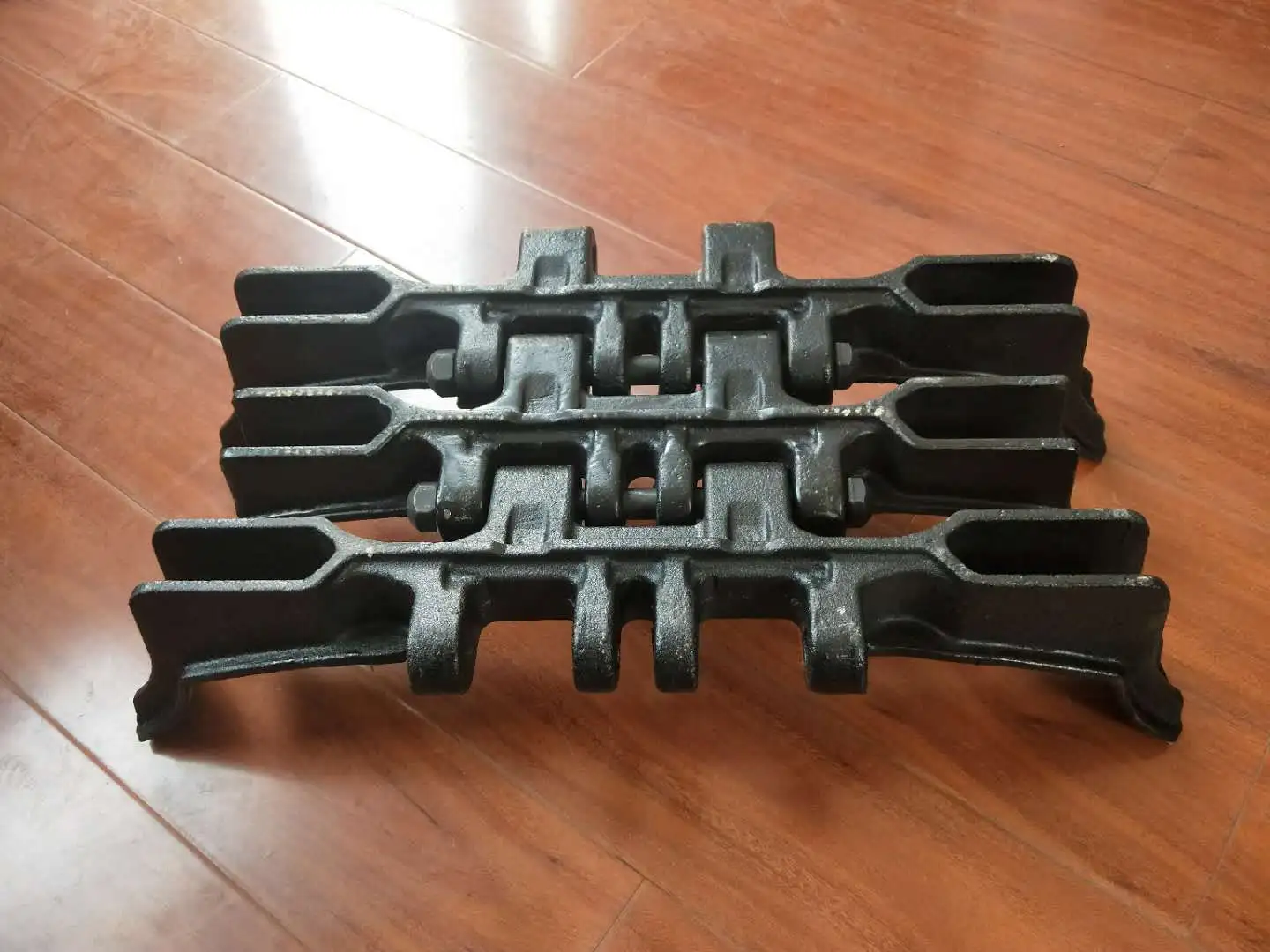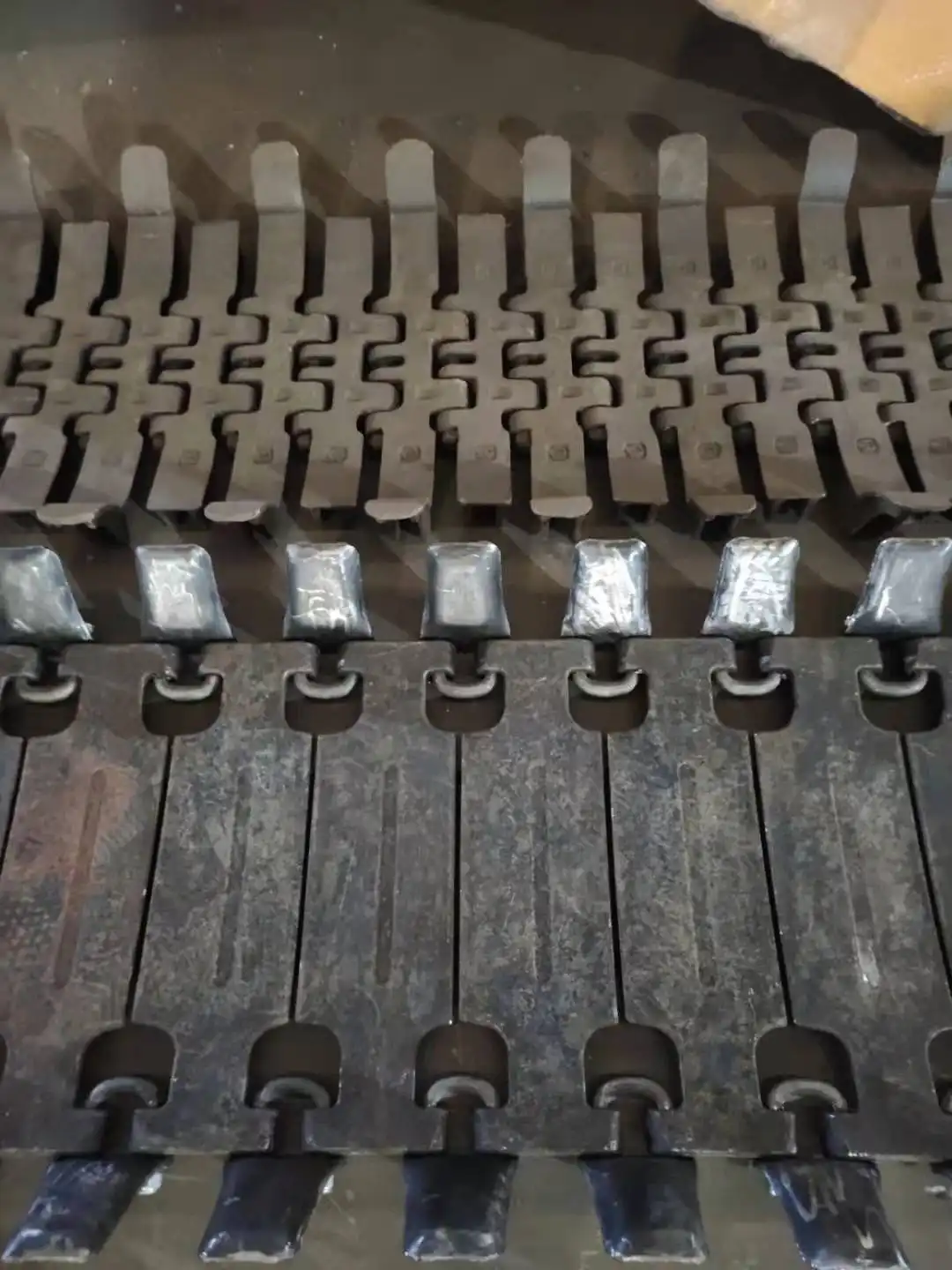Will the loader tire protection chain work on ice?
The effectiveness of loader tire protection chains on ice stems from their unique design philosophy - they don't just rely on friction like regular tires, but actually create mechanical grip through their link structure. When your loader encounters icy conditions, these chains provide the critical traction needed to prevent dangerous sliding, maintain precise control during material handling, and ensure consistent productivity even in challenging winter environments. The chain links act as miniature ice picks, breaking through surface ice while distributing the machine's weight across multiple grip points.

Key Mechanisms for Ice Performance
Understanding how loader tire protection chains function on ice requires examining the fundamental physics of traction and the ingenious engineering behind these devices. The primary mechanism involves converting the smooth, continuous surface of a tire into a series of discrete contact points that can penetrate ice formations.
Chain Link Design and Ice Penetration
The individual chain links serve as concentrated pressure points that focus the loader's weight into small areas, creating enough force per square inch to break through ice layers. This principle works similarly to how ice skates function, but in reverse - instead of gliding over ice, the chains dig into it. The hardened steel construction ensures that the links maintain their shape and sharpness even under extreme loads, providing consistent performance throughout the operating season.
Modern loader tire protection chains feature specially designed link patterns that optimize ice penetration while maintaining structural integrity. The spacing between links creates a self-cleaning action that prevents ice buildup, ensuring a consistent grip throughout extended operations. This design consideration proves crucial because accumulated ice on the chains themselves would reduce their effectiveness.
Weight Distribution and Pressure Points
The distributed nature of chain contact points fundamentally changes how your loader interacts with icy surfaces. Instead of relying on the relatively large contact patch of a tire, protection chains create hundreds of individual pressure points across the tire's circumference. Each link acts independently to find grip, meaning that even if some links encounter particularly smooth ice, others will find purchase on rougher areas or break through to underlying surfaces.
This weight distribution principle becomes particularly important when considering the massive weights involved in loader operations. A fully loaded machine can exceed 20 tons, and concentrating this weight through chain links creates pressures sufficient to crack even thick ice formations. The mechanical advantage gained through this pressure concentration explains why chains remain effective even on surfaces where standard tires would provide virtually no traction.
Dynamic Grip Enhancement
As the loader moves, the chains create a dynamic gripping action that continuously breaks and reforms contact with the ice surface. This constant engagement provides superior traction compared to static systems because each rotation brings fresh chain links into contact with the ice. The rotational forces also help clear debris and ice fragments from the contact area, maintaining optimal grip conditions.
The dynamic nature of chain operation also contributes to improved directional stability on ice. When a loader begins to slide or lose traction, the chains provide immediate feedback through increased resistance, allowing operators to adjust their approach before losing control. This responsive characteristic makes chains particularly valuable for precision work on icy surfaces where maintaining exact positioning is crucial.
Technical Features for Icy Environments
The engineering behind effective ice performance in loader tire protection chains involves sophisticated materials science and mechanical design principles. These technical features work together to create a system that not only provides superior traction but also withstands the harsh conditions typical of winter construction and industrial operations.
Material Composition and Hardness
High-quality loader tire protection chains utilize specially formulated steel alloys that maintain their properties across extreme temperature ranges. The steel must remain hard enough to penetrate ice while retaining sufficient ductility to absorb shock loads without fracturing. This balance requires precise metallurgical control during manufacturing, with carbon content and heat treatment carefully calibrated for optimal performance.
The surface treatment of chain links plays a crucial role in ice performance. Many premium chains feature specialized coatings or heat treatments that enhance hardness at contact points while maintaining flexibility at stress concentration areas. These treatments also provide corrosion resistance, which becomes critical when chains are exposed to road salt and moisture typical of winter operations.
Link Geometry and Pattern Design
The specific shape and arrangement of chain links significantly impact ice performance. Ladder-pattern chains, which feature cross-links perpendicular to the direction of travel, provide excellent lateral stability on ice, preventing side-slipping during turns or on slopes. Ladder-style chains are particularly popular for wheel loaders operating in cold weather conditions, providing excellent protection against punctures and cuts while improving traction in snow and ice.
Diamond-pattern chains offer different advantages, with diagonal link arrangements that provide more contact points per revolution. This design creates a smoother ride while maintaining excellent ice grip, making it ideal for applications requiring frequent direction changes or precise maneuvering on icy surfaces.
Durability Under Ice Conditions
Ice operations present unique durability challenges because the constant impact with hard ice surfaces creates high-stress conditions. Quality chains feature reinforced connection points and wear-resistant materials at critical stress locations. The ability to withstand repeated ice impacts without deformation or failure determines the long-term value of the investment.
Corrosion resistance becomes particularly important in ice applications because the combination of moisture, salt, and mechanical stress accelerates deterioration. Premium chains incorporate anti-corrosion treatments and use alloys that naturally resist rust and degradation, ensuring reliable performance throughout multiple winter seasons.

Practical Performance in Ice Conditions
Real-world performance of loader tire protection chains on ice varies significantly based on operating conditions, equipment setup, and maintenance practices. Understanding these practical considerations helps operators maximize the benefits of their chain investment while avoiding common pitfalls that can reduce effectiveness or create safety hazards.
Installation and Operational Considerations
Proper installation becomes more challenging in icy conditions but remains crucial for optimal performance. Cold temperatures can make chains less flexible, requiring additional care during installation to prevent damage. Many operators find that installing chains in heated facilities and then moving equipment to work areas provides better results than attempting installation in frigid outdoor conditions.
The break-in period for new chains requires special attention in ice applications. Fresh chains may have sharp edges or burrs that need to wear smooth before achieving optimal performance. Operating at reduced speeds during the initial hours allows the chains to seat properly and develop the wear patterns that enhance ice grip.
Speed and Operational Limitations
While loader tire protection chains dramatically improve ice traction, they do impose operational limitations that must be respected for safety and equipment longevity. Maximum safe speeds typically range from 15-25 mph, depending on chain type and ice conditions. Exceeding these speeds can cause chain failure, tire damage, or loss of control.
The improved traction provided by chains can create a false sense of security, leading operators to attempt maneuvers that exceed the equipment's capabilities. Even with excellent traction, loaders remain subject to the laws of physics, and momentum on ice can still cause problems if operators don't adjust their techniques appropriately.
FAQ
①How long do loader tire protection chains last on ice?
Quality chains typically last 2-3 seasons with regular ice use, depending on operating conditions and maintenance. Proper installation and speed limits significantly extend chain life.
②Can I install chains on frozen tires?
Installation is possible but more difficult on frozen tires. Warming chains and tires in a heated area before installation provides better results and reduces damage risk.
③Do chains work on all types of ice?
Chains perform well on most ice conditions, including hard pack, thin ice, and mixed ice/snow surfaces. Extremely smooth, thick ice may require additional traction aids.
④How much do chains improve stopping distance on ice?
Properly installed chains can reduce stopping distances by 40-60% compared to bare tires on ice, though exact improvements vary by conditions and equipment.
⑤Are there safety considerations specific to ice operation?
Yes, operators should reduce speeds, avoid sudden movements, and maintain extra following distance. Chains improve traction but don't eliminate all ice-related risks.
About Tiannuo
The question of whether tire protection chains work on ice has a definitive answer: they absolutely do, and they represent one of the most effective solutions available for maintaining heavy equipment productivity during winter conditions. Through their sophisticated design that combines hardened steel construction with optimized link patterns, these chains transform dangerous ice surfaces into manageable operating environments.
The technical sophistication behind modern protection chains addresses the unique challenges of ice operations through carefully engineered materials, precise manufacturing tolerances, and design features that maximize grip while ensuring durability. From the metallurgy of the steel links to the geometry of the contact patterns, every aspect contributes to creating reliable traction on even the most challenging icy surfaces.
When selecting protection chains for ice applications, partnering with experienced manufacturers ensures access to the latest technology and proper application guidance. Tiannuo's loader tire protection chain solutions combine advanced materials with proven designs to deliver reliable performance in the most demanding conditions. Our chains protect tires while tripling their lifespan, feature quick installation requiring just two people and one hour, and maintain low failure rates with minimal maintenance requirements. With enhanced traction that boosts efficiency while reducing fuel consumption, these chains represent an intelligent investment in operational capability and safety.
For comprehensive information about selecting the right protection chain solution for your specific ice operation requirements, we invite you to contact our technical specialists at tn@stnd-machinery.com. Our team provides expert guidance on chain selection, installation procedures, and maintenance practices that maximize performance and value in challenging winter conditions.
References
- Journal of Cold Regions Engineering, "Tire Traction Enhancement Systems for Heavy Equipment in Winter Conditions," Vol. 34, No. 2, 2023.
- International Journal of Heavy Equipment Safety, "Comparative Analysis of Tire Protection Systems in Icy Environments," pp. 245-267, 2023.
- Construction Equipment Research Quarterly, "Winter Operational Efficiency: Impact of Tire Chain Technology on Loader Performance," Issue 3, 2024.
- Society of Automotive Engineers Technical Paper, "Materials Science Applications in Heavy Equipment Tire Chain Design," SAE 2024-01-0892.
- Cold Weather Operations Manual for Heavy Equipment, "Best Practices for Tire Chain Selection and Maintenance," Third Edition, Industrial Press, 2024.
About Author: Arm
Arm is a leading expert in the field of specialized construction and railway maintenance equipment, working at Tiannuo Company.

